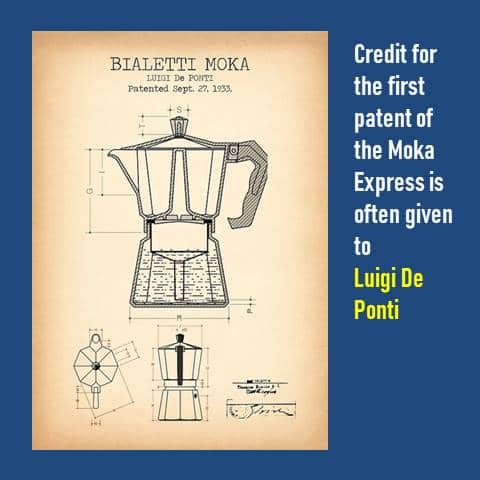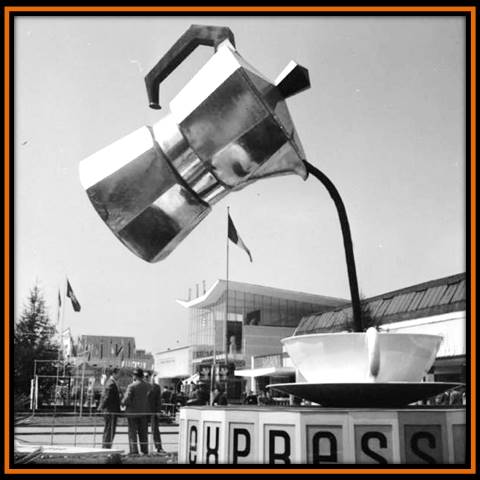When was the Moka Pot Invented? The Fascinating History of the Moka Pot
When you are a moka pot fan, you may wonder when was the moka pot invented. Well, The legacy of moka pot began in the early nineteenth century. During the boom years after World War II, Bialetti Moka pots were one of the first luxury items the new middle class in Italy could afford. According to fortune.com, the company has sold more than 200 million coffee pots since it was founded.
TABLE OF CONTENTS
When was the Moka Pot Invented?
In 1933, it was Alfano Bialetti who came up with the idea of the Moka Express. It has revolutionized the way Italians make coffee at home. Italians have inherited this culture through generations and it has led it to become one of Italy’s major producers. One can see that its history has been shaped by thrift, economics, and changing cultural trends. It is often attributed to Luigi De Ponti, but he was actually the CEO of Alfonso Bialetti & C., Fonderia In Conchiglia S.P.A.

It was named after the city of Mocha, in Yemen, known worldwide for the quality of its coffee. It is one of the most common methods used in Italy to make coffee at home.
The Story of the Bialetti Moka Express
The legacy of the original Moka express is a fascinating history. Still, it is an eight-faceted body that has remained unchanged for over 70 years. It was named one of the five most iconic Italian designs of the 20th century along with Nutella, the Fiat 500 of 1957, and the Vespa of 1946!
Bialetti’s Iconic Mascot
Bialetti’s mascot appears on all Bialetti Moka Express models. It is a man with a mustache holding up his index finger. This is as if ordering an espresso at a bar in Italy. He is called ‘l’omino con i baffi’ in Italian. Paul Campani illustrated the mascot. A caricature of Renato Bialetti, the son of Alfonso Bialetti, is the team’s mascot.

An epiphany of a Bialetti
It is said that Mr. Bialetti got his inspiration from his wife’s washing machine. A bucket of soapy water was heated by the fire and sprayed over the laundry by a central hose.
He thought that espresso coffee could be produced in the same manner at home with such a simple concept. Several prototypes and tests later, he realized he had created the first coffee percolator. It was aluminum based on the silver coffee sets in use at the time.
The Moka pot is one of the most popular coffee pots in Italy. According to current estimates, there is a moka pot in three out of four Italian households. A revolution in home espresso production led to the slogan “as good as in a coffee shop”.
How Moka Pot Works
During brewing, water fills up to the safety release valve in the bottom chamber. Next, a funnel-shaped metal filter is inserted above the funnel to hold finely ground coffee. The upper part is tightened to the base. The pot is placed on the stove. It uses the pressure from the vapor saturation to push the water through the ground coffee.
Moka coffee isn’t as strong as espresso, but it’s stronger than regular drip coffee. Moka pots produce a remarkably rich and intensely flavored cup of coffee. It only trails regular espresso and cold brew in terms of caffeine but beats the French press and drip.
How Moka Pot Conquered the World
After WWII, the house took on a more central role in Italian society. Later, the democratization of the art of coffee making helped in this transformation. This was because people could now make a coffee as good as those at the coffee shops in the privacy of their homes. This was because they had a simple device that took over the charismatic aura of baristas.

From Italy, the Moka pot spread to Europe and Latin America. Design collections around the world have included the iconic design in their permanent collections, including that of the Museum of Modern Art in New York. Many museums display industrial art and design, such as the Wolfsonian-FIU, the Museum of Modern Art, the Cooper-Hewitt, the National Design Museum, and the London Science Museum.
Following the Second World War, the Italian Moka pot spread to all of southern Europe and was regarded as the standard way of making coffee at home. Non-Italian South European manufacturers copied or redesigned the original design, as a result of its popularity.
Most Italian migrants who arrived in Australia after World War II used the Moka pot. As of 2000, the Moka was popular in many Australian homes. Nowadays, Australians enjoy this beverage for breakfast, adding it to a mug and topping it with either hot water or warmed milk.
Do you think people will still choose the Moka?
The act of making your own coffee may be very personal, hand-made, and early in the morning. Anthropologically, a sound imprinted on Italians’ collective memory… the blubber-blubber-blub of coffee. Moka is going to remain popular with this market. I wonder if there will also be capsule machines. Would that be useful? In recent years, capsule coffee has become increasingly popular. Yet, this is another story altogether.
Bialetti is seeing a shift in coffee consumption trends. The moka pot is virtually indestructible, but that’s where Bialetti’s business strategy falters. Guiggeri, for instance, told me that he has four Moka Express pots at home, but he didn’t buy any of them. These are hand-me-downs at least 30 years old that work just as well as they did when they were newly purchased.
As a result of the Coronavirus pandemic, more people are making their coffee at home as coffee bars across Italy and beyond are shut down or only partially open.






